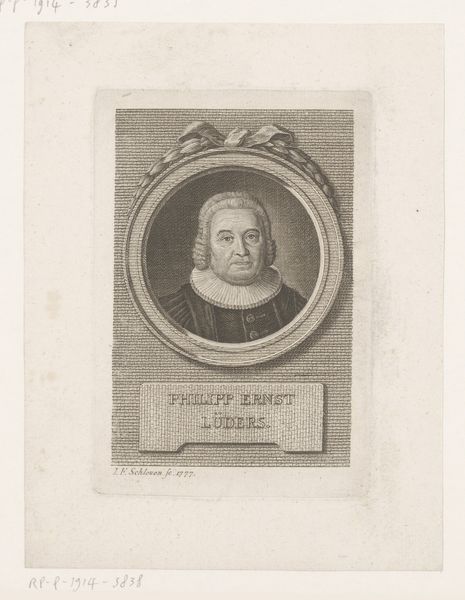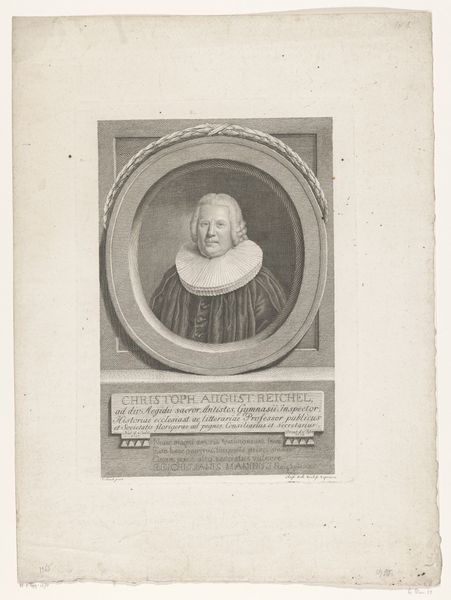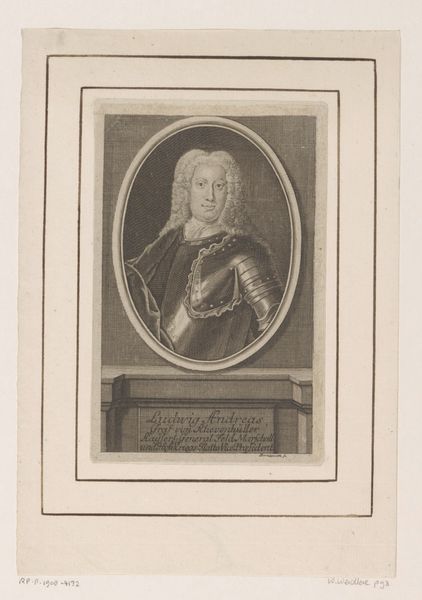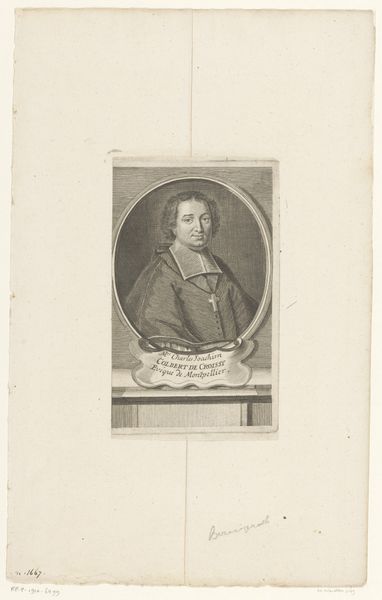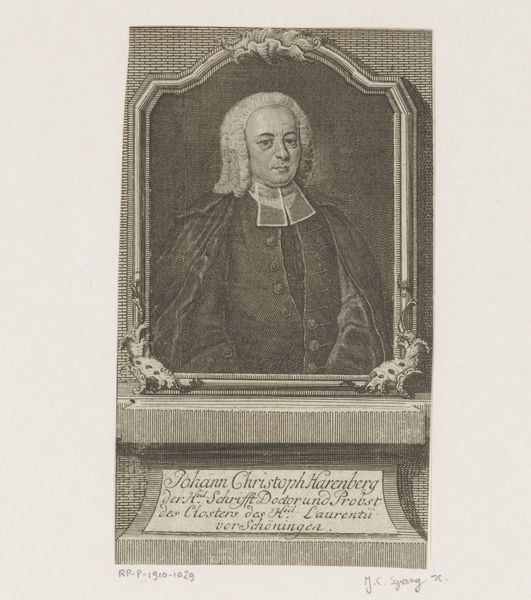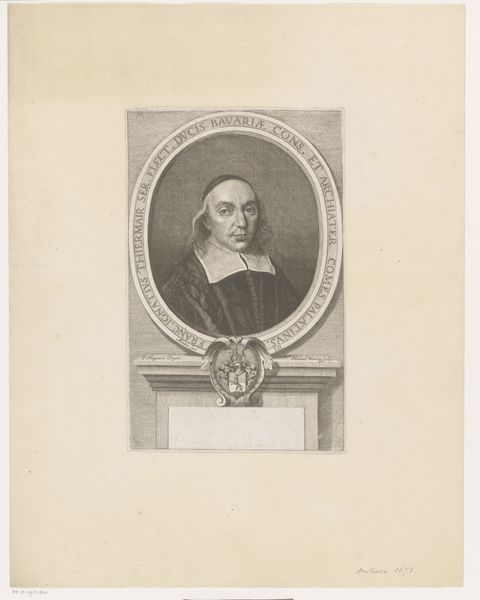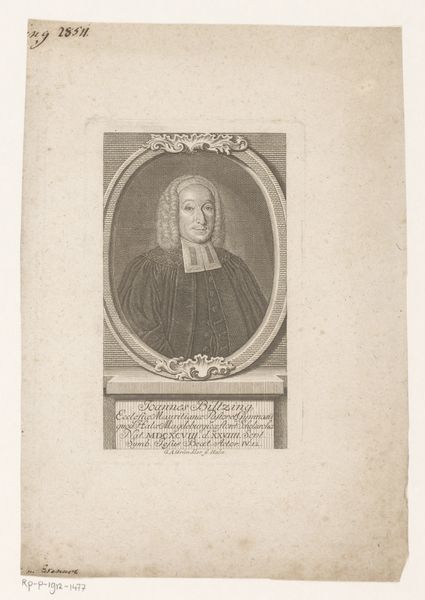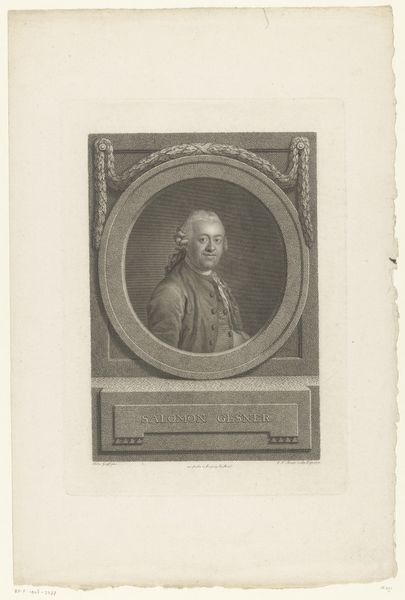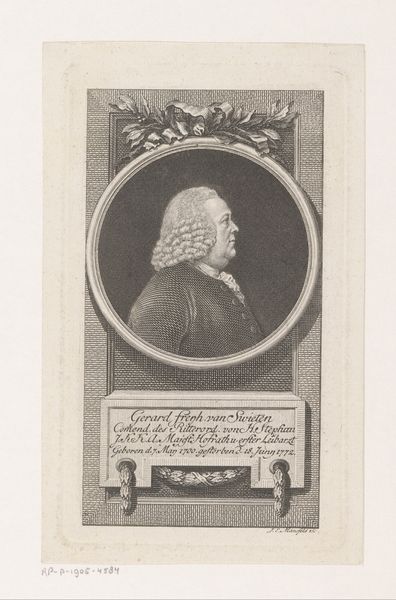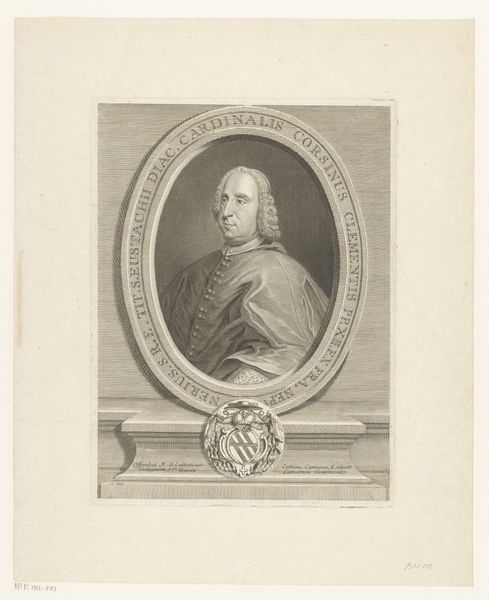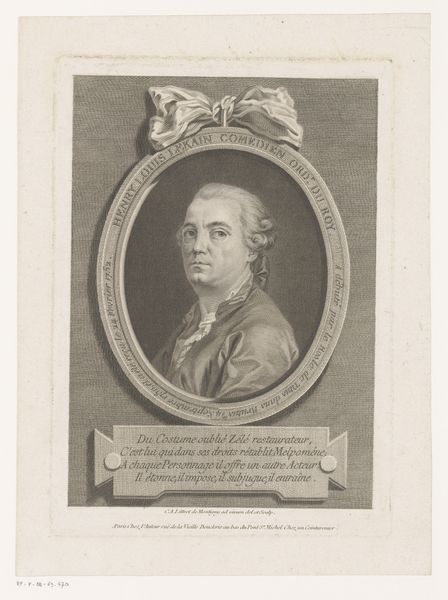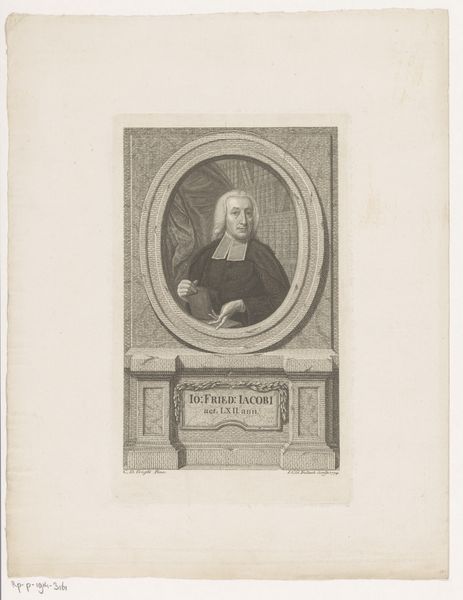
engraving
#
portrait
#
neoclacissism
#
academic-art
#
engraving
Dimensions: height 179 mm, width 108 mm
Copyright: Rijks Museum: Open Domain
Curator: Johann Christian Gottfried Fritzsch rendered this piece, "Portret van Heinrich Julius Willerding," as an engraving in 1787. Editor: My first impression is one of stark formality—the meticulous detail almost seems to drain the subject of any discernible personality. Curator: I find the portrait technically intriguing. The precision with which Fritzsch employs engraving is commendable; note the lines which contour the face and convey light. The oval frame within a rectangular setting demonstrates a balance of shape. Editor: I can certainly acknowledge the technical skill involved. However, situating Willerding within his historical context, one can't help but see this work as reinforcing hierarchies of class and power. The rigid posture, the ostentatious collar—they speak volumes about societal expectations imposed on figures of authority. He was a pauper preacher. How does this formal representation align with someone helping the less fortunate? Curator: Yet there's also a subtle elegance here that goes beyond mere status. The quality of line and careful modulation of light have their own inherent value. By emphasizing Willerding’s posture, Fritzsch makes an essay in line, mass, and composition—and ultimately asks questions about what constitutes the person. Editor: To divorce the work from its subject, from its clear intention to memorialize a man of the church during a period of massive social stratification... is precisely what makes its inherent value questionable. How complicit is the artist in idealizing social positions rooted in injustice? Curator: A fair point, but through semiotic scrutiny of these features—the lines, framing, and light—one understands the work's internal structural coherence, its sophisticated composition—qualities that supersede pure representation. Editor: Perhaps instead of celebrating the art, we need to ask who benefits from its symbolism? How can this 18th-century engraving inform contemporary discussions about religious authority, privilege, and social justice? Curator: Ultimately, Fritzsch offers more than a static representation. He lays bare the underlying compositional features. Editor: And simultaneously preserves, within a singular, unforgiving portrait, an entire system of values.
Comments
No comments
Be the first to comment and join the conversation on the ultimate creative platform.
